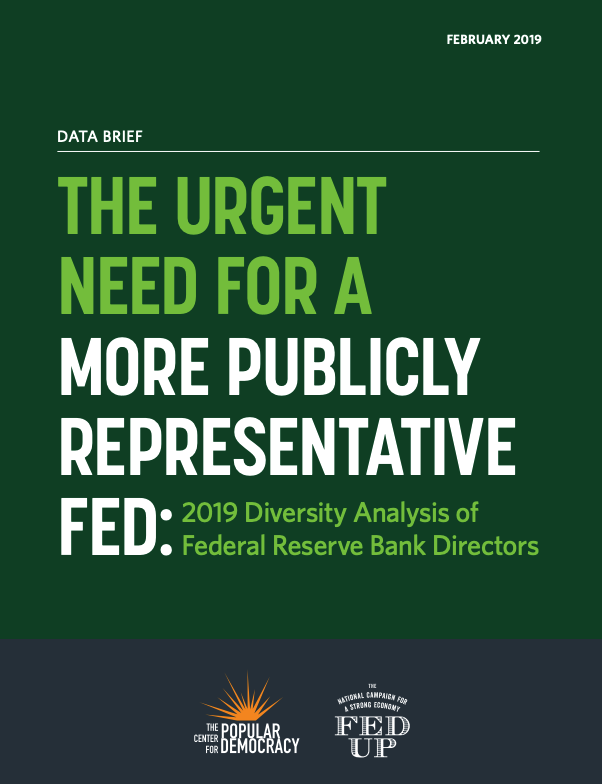New Report Details the Urgent Need for a More Publicly Representative Fed

In February, the Fed Up Campaign released “The Urgent Need for a More Publicly Representative Fed: 2019 Diversity Analysis of Federal Reserve Bank Directors” which reveals a shocking lack of progress in diversity among the nation’s most powerful monetary policymakers. Every year the Fed Up Campaign conducts an analysis of the gender, racial, and occupational diversity of the Federal Reserve system’s leadership. This is designed to gauge progress on the Federal Reserve’s public commitments to diversity and highlight areas for continued growth in the coming year.
This year’s report was released in an exclusive with Forbes which pointed out that, “The relative absence of women and racial minorities [in the Fed] is problematic... Within the Federal Reserve, this lack of diversity can create blind spots on critical issues that impact historically underrepresented groups.” This original analysis is the only of its kind and often garners wide coverage in the media, which adds important public pressure to the Fed.
The data shows the Federal Reserve is backsliding on the incremental progress it made on diversity in 2018. In 2019, among the 108 current Fed Board Directors: 76% come from the banking or business sectors, 74% are white, and 62% are male. Unfortunately, these diversity issues also extend to Federal Reserve Bank Presidents who are overwhelmingly (83%) white and are most commonly recruited from with the Federal Reserve’s existing leadership or the finance sector. In fact, 3 of the 12 current Fed Presidents have strong ties to Goldman Sachs--an institution the Fed is tasked with regulating. Without diverse perspectives, the Federal Reserve’s failure to represent the interests of the American people will persist. In 2019, policymakers and advocates continue to call on the Federal Reserve to actively pursue greater diversity at all levels of its leadership. Read the report in full on our website.












